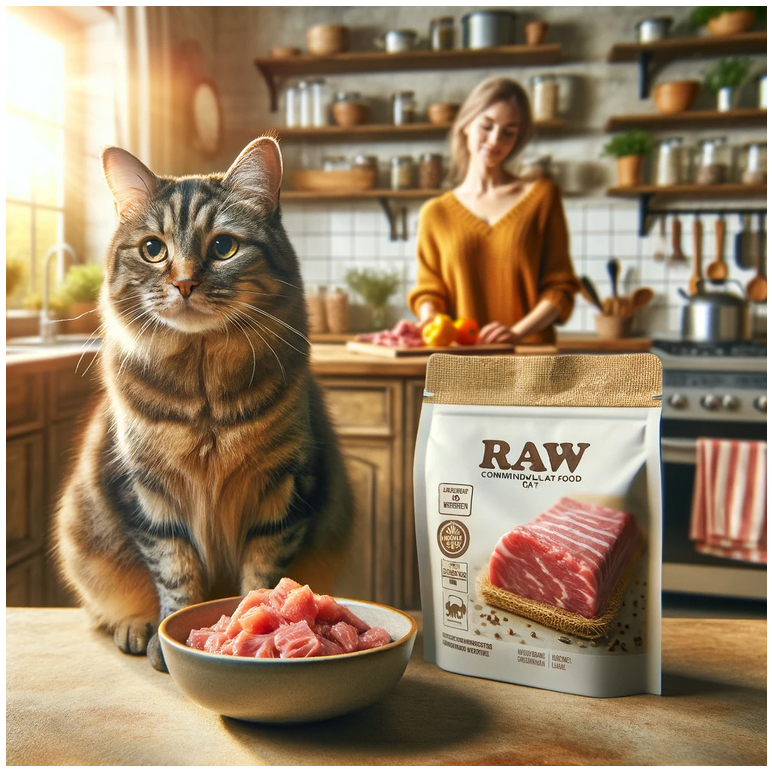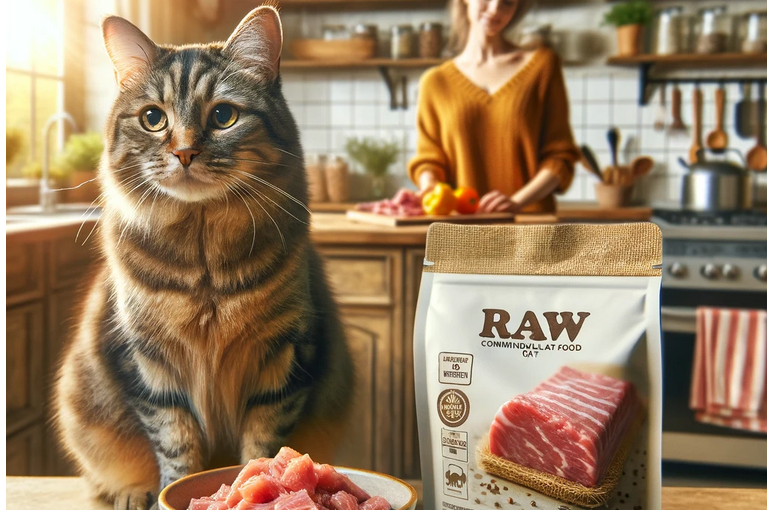The quest for optimal feline nutrition has led many pet owners to consider raw diets for their cats. By emulating the ancestral diet of wild cats, a raw feeding regimen promises numerous health benefits. However, as you weigh the decision between homemade and commercially available raw cat food, it’s crucial to understand the safety, benefits, and potential risks involved. This guide offers a deep dive into both options, providing insights into raw cat food recipes and highlighting reputable commercial brands to help you make an informed choice for your furry friend.

Understanding Raw Diets for Cats
Raw diets, often known as “BARF” (Biologically Appropriate Raw Food or Bones and Raw Food), consist of raw meats, organs, bones, and in some cases, supplements for added nutrition. The goal is to closely mimic the natural diet of wild cats, aiming to support better health and vitality.
Homemade Raw Diets: Pros and Cons
Pros:
- Customizability: Homemade diets can be tailored to your cat’s specific needs and preferences.
- Control Over Ingredients: You know exactly what’s going into your cat’s food, allowing you to source high-quality, fresh ingredients.
Cons:
- Nutritional Balance Challenges: Ensuring your homemade raw diet meets all your cat’s nutritional requirements can be complex and requires thorough research.
- Time-Consuming: Preparing your cat’s food from scratch is time-intensive.
- Risk of Contamination: Improper handling and storage can lead to bacterial contamination.
Commercially Available Raw Cat Food: Pros and Cons
Pros:
- Convenience: Pre-packaged and pre-portioned, commercial raw diets save time.
- Nutritional Assurance: Reputable brands formulate their products to meet established nutritional standards.
- Safety Standards: Commercial products undergo rigorous safety testing to minimize the risk of contamination.
Cons:
- Cost: High-quality commercial raw diets can be more expensive than homemade options.
- Limited Customization: You have less control over the specific ingredients used.
Resources for Raw Cat Food Recipes
For those interested in preparing homemade raw diets, it’s essential to use recipes formulated by experts in feline nutrition. Websites like Feline Nutrition Foundation (FelineNutrition.org) and books such as “Raw and Natural Nutrition for Dogs and Cats” by Kymythy Schultze provide comprehensive guides and recipes that ensure a balanced diet.
Reputable Commercial Raw Cat Food Brands
When selecting a commercial raw cat food, look for brands with a strong reputation for quality and safety. Here are a few well-respected options:
- Primal Pet Foods: Offers freeze-dried and frozen raw diets that can be purchased individually or through subscription for convenience.
- Stella & Chewy’s: Known for their freeze-dried raw morsels and patties, available for purchase individually or via subscription, depending on the retailer.
- Nature’s Variety Instinct: Offers a range of frozen and freeze-dried raw products, available in pet stores and online without a subscription requirement.
Making an Informed Decision
Choosing between homemade and commercially available raw cat food depends on your lifestyle, budget, and the specific health needs of your cat. Regardless of your choice, ensure that the diet is nutritionally balanced and safe. Always consult with a veterinarian or a feline nutritionist, especially when making significant changes to your cat’s diet or if you’re considering homemade options.
Conclusion
The debate between homemade versus commercially available raw cat food is nuanced, with each option presenting its own set of benefits and challenges. By prioritizing your cat’s health and nutritional needs, and armed with the right information and resources, you can make a choice that supports their well-being and vitality. Whether you opt for the customization of homemade meals or the convenience of commercial options, the goal remains the same: providing your cat with a diet that mirrors their natural nutritional requirements for a long, healthy life.





Your article helped me a lot, is there any more related content? Thanks!